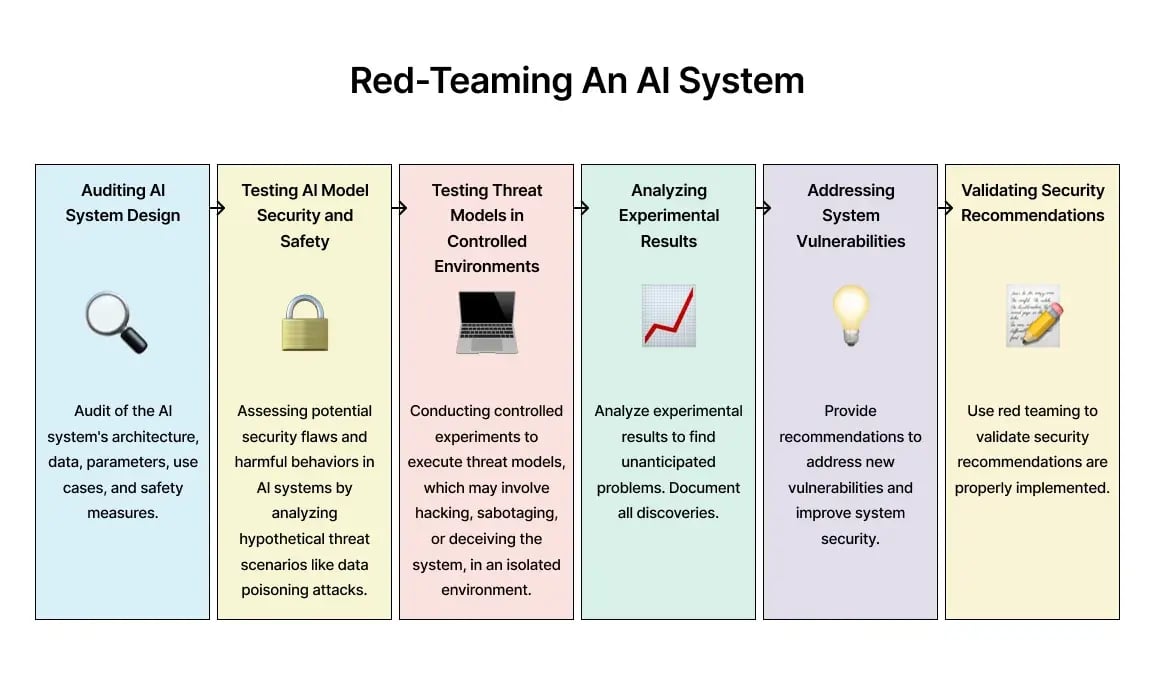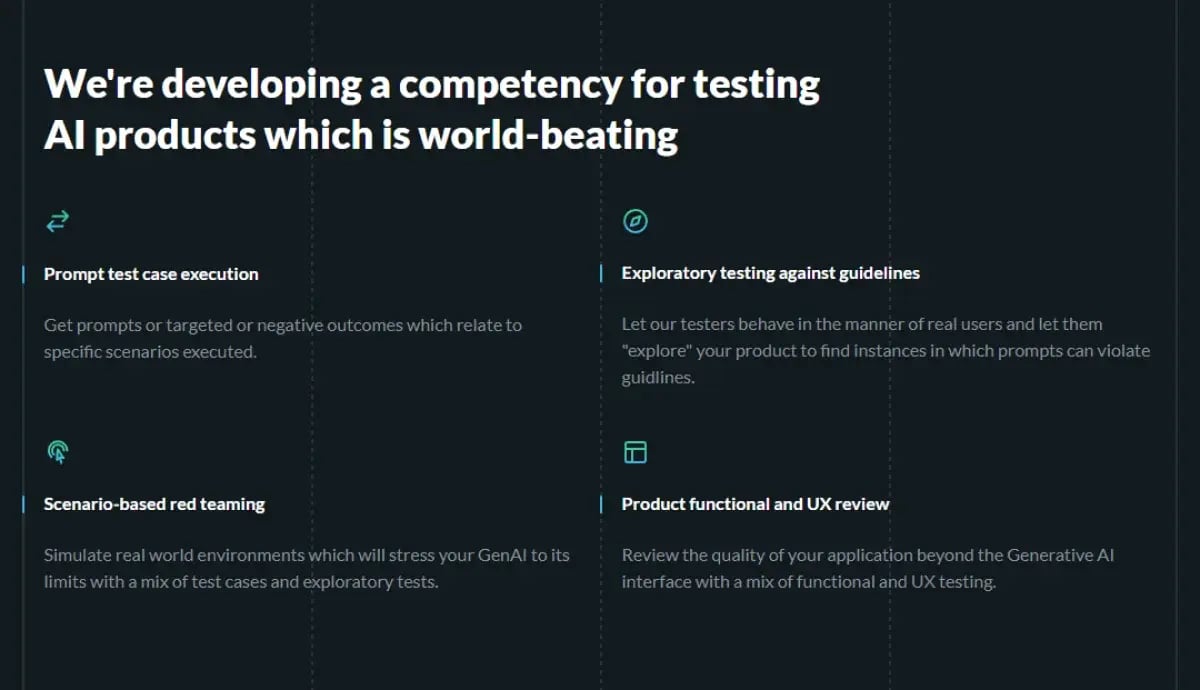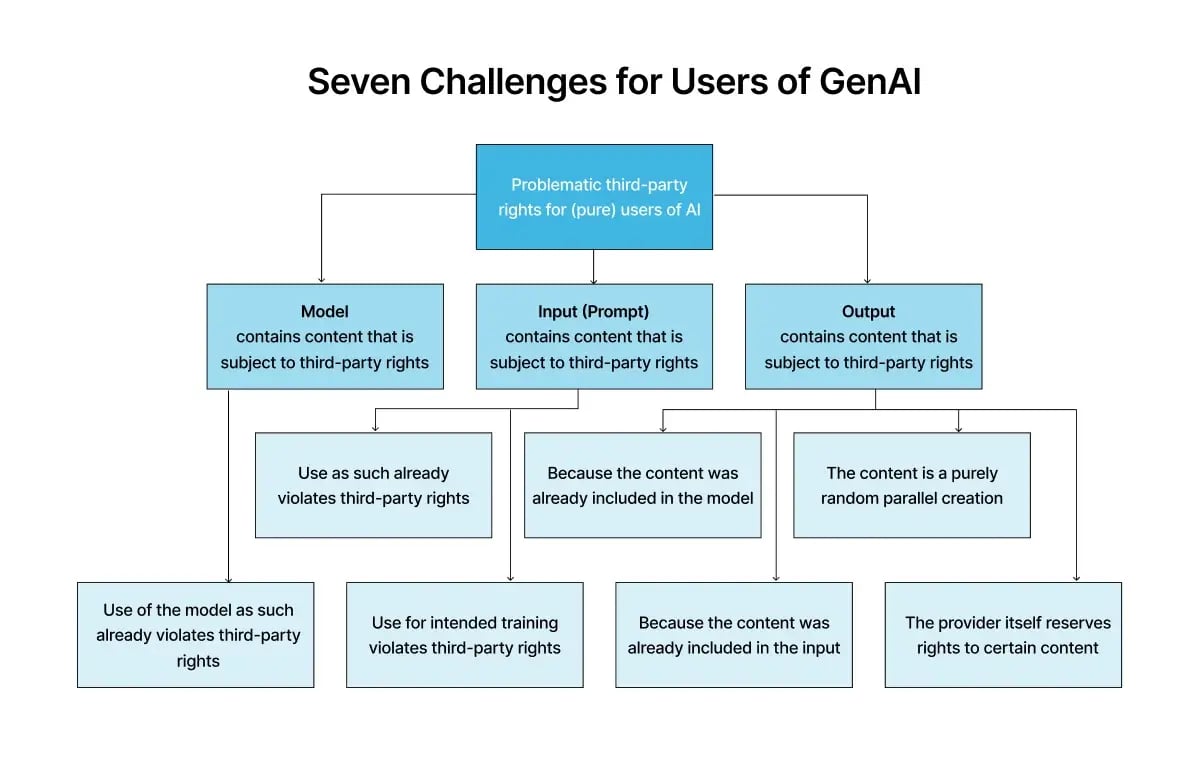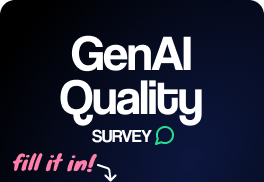Generative AI testing: What it is and how to conduct it?
Have you ever wondered how generative AI models work and how they can provide a huge amount of information without malfunctioning? If enough time is spent testing every aspect of GenAI, the end product has a huge chance of working as intended. However, understanding generative AI testing, its goals, and how to perform it is the key step to a successful generative AI system that corresponds with legal norms and meets users' expectations. Let's explore GenAI testing in detail!
We can help you drive Generative AI testing as a key initiative aligned to your business goals
What is generative AI testing?
Generative AI testing assesses the performance and safety of AI systems that create content autonomously. Testing these systems ensures functionality and does not generate undesirable or harmful results.
Here are three key points that show the importance of generative AI testing:
- Legislative changes driving AI testing: The EU's AI Act and the U.S. Executive Order on AI mandate rigorous testing, including red teaming, to ensure AI systems' security and reliability, prompting increased demand for generative AI-based testing.
- AI system failures and risks: AI-related incidents, such as OpenAI's chatbots using racist stereotypes and Google's AI generating offensive images, highlight the critical need for generative AI testing to prevent bias and harmful outputs.
- Cybersecurity and privacy concerns: Risks such as bias, hallucinations, privacy issues, and data poisoning draw attention to the importance of developers prioritizing cybersecurity and privacy in their AI products.
Generative AI testing goals
Let’s explore Generative AI testing goals:
- Identify and mitigate bias: Identify and mitigate embedded biases in training data and outputs to ensure fair and unbiased AI behavior.
- Ensure non-deterministic reliability: Ensure AI's ability to produce various outputs that are consistently accurate and reliable across different scenarios.
- Prevent data leakage: Verify that the AI system does not accidentally reveal sensitive or confidential information in its outputs.
- Assess ethical concerns: Evaluate the AI's potential to generate misleading or deceptive content and ensure it meets ethical standards.
- Simulate real-world scenarios: Test the AI's performance in diverse and realistic environments to ensure proper behavior in practical applications.
- Validate creative outputs: Ensure the AI's creative outputs are appropriate, accurate, and relevant to the intended use cases.
- Improve adaptability: Assess the AI's ability to learn and adapt to new data and unforeseen situations, maintaining high performance over time.
- Enhance data security: Test for potential data poisoning attacks and the AI's resilience against such manipulations to ensure the integrity of its data.
- Benchmark against standards: Compare the AI's performance to established benchmarks and standards to ensure it meets industry requirements.
Generative AI testing challenges
Here are the challenges of testing generative AI:
- Unpredictable results: A single input can produce a variety of unpredictable outputs, complicating the use of traditional testing methods.
- Complex learning: The methods by which generative AI models learn and apply new data are not transparent, making it difficult to understand and explain their reasoning.
- High resource usage: Generative AI systems require significant computational resources to process inputs and generate outputs, making automated testing costly.
- Automation limits: The unpredictability and complexity of generative AI outputs require subjective human judgment, limiting the feasibility of fully automated testing.
- Fast-changing field: The fast-paced development of generative AI technology requires constant updates to testing techniques and protocols to keep evaluations relevant.
- Ethical issues: Addressing and mitigating ethical issues is challenging without standardized ethical frameworks or benchmarks, which, in addition, need further technical and ethical expertise.
Testing Generative AI: Benchmarking and red teaming
Benchmarking and red teaming are two important components in testing generative AI systems. Benchmarking establishes standard performance metrics, allowing for consistently evaluating the AI's capabilities and ensuring it meets predefined quality and accuracy standards. On the other hand, red teaming simulates adversarial attacks to uncover vulnerabilities, helping to identify and avoid potential security threats, thereby ensuring the AI system is robust and safe for deployment. Let's explore them further.
1. Test generative AI system through benchmarking
First, you need to set goals for what the AI should be able to do. Before making the AI, decide on tasks or questions it should be able to handle. You can achieve these goals by working with testers, product managers, and AI experts to ensure that AI can handle real-world situations.
Here are some steps to take when benchmarking generative AI system:
- Defining benchmarks: Begin by defining a set of benchmarks aligned with the system's intended capabilities. This step should be established before development to guide the design process.
- Establishing metrics: Determine how to quantify the AI's performance. It is essential to identify a set of quality metrics measured in percentages rather than just pass/fail. For example, if you have an AI-powered testing tool, assess its effectiveness in generating requirements-based tests.
- Diversity of data: Ensure the benchmarking data is diverse, covering various regions, demographic groups, or products as needed. This diversity is vital to assess the system's ability to perform well across different contexts.
- The primary role of the tester: The tester's job is to define the benchmarks and ensure quality metrics are in place. This involves aligning product management and AI engineers on these quality standards.
- Exploratory testing: In addition to automated benchmarking tests, exploratory testing is also used to identify unexpected behaviors or weaknesses in the AI system.
- Regular monitoring: Monitor the system for errors, biases, or hallucinations in the outputs.
2. Red teaming for generative AI testing
Red teaming is a security and testing practice used for generative AI systems. This approach involves a team of experts trying to identify and exploit vulnerabilities in the AI system to reveal potential risks and harms. The primary goal of red teaming in generative AI testing is to ensure the system is robust against attacks and data leaks, safeguarding against financial losses, reputational damage, and other severe consequences.
In red teaming, there are usually two main personas with different roles:
- The benign persona uses the AI system as intended, exploring potential harms without malicious intent. Under normal usage, this approach tests whether the AI could inadvertently cause harm or operate outside its intended scope. Harms discovered through benign interactions are often more concerning, as they can occur during regular use.
- The adversarial persona, on the other hand, employs any means necessary to force the AI to misbehave, including prompt hacking, token overflowing, and other security-focused tactics. Although adversarial testing often identifies lower-impact harms due to the extreme measures required, it is essential for uncovering vulnerabilities like data leaks, where an attacker might exploit the system.
How do we set up and plan red teaming?
Here are the steps you should take to set up and plan red teaming:
- Create a working charter: Develop a detailed charter outlining expected harms and leave room for discovering additional issues during the process.
- Define team roles: Assign and rotate specific roles such as benign, adversarial, and advisory to utilize various perspectives. Provide comprehensive guides for effective testing strategies.
- Thorough documentation: Record every identified harm, including the entire sequence and context, to ensure a complete understanding of the vulnerabilities.
- Focus the scope: Concentrate on specific harms during each session to ensure thorough testing. Avoid overly broad objectives to maintain effectiveness.
- Set time limits: Establish clear time constraints for each session and the overall number of sessions to keep the team focused and ensure timely completion.
- Iterative testing: Conduct testing in multiple rounds, regrouping after each to share insights and refine the approach for subsequent sessions.

Pro Tip
Global App Testing provides red teams that specialize in identifying the outcomes of bad-faith product use, including inappropriate or offensive content. Our professional red teams simulate real-world environments through scenario-based red teaming, pushing your GenAI to its limits with test cases and exploratory tests.

Methods for testing generative AI and detecting potential harms
Let's explore additional strategies you can implement to test your generative AI.
1. Extracting sensitive data
Remember that generative AI systems produce a huge amount of data, which can sometimes be overwhelming. The red team's role is to find ways to extract sensitive data, such as internal information or personally identifiable information (PII), that may have been incorporated into the AI model. A key aspect is determining whether the AI has been trained on internal or customer-sensitive data. If so, the red team must be skilled at extracting this data from generative AI systems, like obtaining information that should not be accessible to users or the public. For example:
- Extracting meta-prompts and training data: The AI may unintentionally expose the instructions and examples it was trained on, providing insights into its operational mechanisms and programming, which are typically kept confidential.
- Accessing information from unintended sources: This could happen if the AI, through some manipulation, starts to pull information from databases or sources it was not intended to access. For example, this occurs if an AI designed to provide customer support starts accessing and revealing financial records.
- Extracting PII: In this scenario, the AI is manipulated into divulging personal user information, like addresses or phone numbers, or even more sensitive data, like passwords or security keys.
2. Prompt overflow
"Prompt overflow," a strategy used by red teams, involves intentionally inundating the system with substantial input to disrupt its core function. This common tactic can potentially repurpose the AI for unintended outcomes, ranging from exposing sensitive data to generating irrelevant or harmful content.

3. System hijacking
The most critical aspect of system hijacking is ensuring the AI system cannot be manipulated into performing unauthorized actions or repurposing its functionalities. This includes:
- Misuse of tools: Hijacking involves manipulating the AI into using internet access or external tools for unintended purposes, such as downloading large files or accessing prohibited sites.
- Repurposing instructions: Hijacking can also entail altering the AI's intended function, like transforming an educational AI into a tool for promoting specific products or ideologies.
- Remote code execution: Hijacking may involve using AI to execute malicious code on other systems, potentially initiating unauthorized actions or downloads.
4. Unauthorized legal commitments
This method's primary concern is evaluating the AI's potential to make unauthorized legal commitments or provide false information about company policies, discounts, or services. Ensuring the AI does not misrepresent the company, potentially causing legal issues or reputational damage is crucial.

5. Societal norm violations
The most important aspect of this strategy is preventing the AI from generating content that violates laws or societal norms, such as engaging in hate speech, infringing on copyrighted material, or making offensive comments.

6. Inappropriate tone
The key focus here is ensuring the AI maintains an appropriate and respectful tone in all interactions. The goal is to evaluate the AI's responses to ensure it does not exhibit aggressive, disrespectful, or condescending behavior toward users.
7. Malware defense
The critical aspect of malware defense is ensuring the AI system cannot be exploited to execute malicious actions, such as downloading viruses or interacting with external systems in harmful ways. Simulating attacks helps evaluate the AI’s safeguards against cyber threats.
8. External access control
The most important aspect of this strategy is assessing the AI’s access to external tools and APIs to prevent unauthorized data manipulation or deletion. Testers must simulate scenarios where the AI might misuse its permissions and evaluate the potential impact of these actions, ensuring the system’s security and integrity.
Conclusion
Testing generative AI can be tricky; sometimes, we miss important things. However, we can improve the testing by using the methods mentioned for generative AI. These methods help AI models work better and make users happier, which is important for improving AI.
How can Global App Testing elevate your GenAI?
Global App Testing offers a unique service tailored for Generative AI testing. With a vast community of over 90,000 real testers across 190+ countries, they provide real-user testing, global coverage, and compliance-focused assessments that can be personalized to your requirements. Here is how we can elevate your Generative AI:
- Ensure content guideline compliance: Verify generated content against guidelines to detect false, inappropriate, or uncanny outputs.
- Conduct red team testing: Employ professional red teams to mimic bad-faith user behavior and safeguard against harmful use.
- Assess bias: Administer surveys targeting specific demographics to evaluate perceived content bias.
- Test UX and UI: Utilize traditional QA and UX testing tools to ensure optimal user experience and interface functionality.
- Verify device compatibility and accessibility: Validate your AI product’s functionality across various devices and ensure compliance with accessibility standards.
- Confirm AI Act compliance: Test features for compliance with real users and devices, providing comprehensive functionality breakdowns.
- Perform exploratory and scenario-based testing: Simulate real-world environments and explore the product for potential guideline violations.
- Access expert consultation and best practices: Obtain a GenAI safety and quality primer featuring best practices, tools, and resources for developing secure, high-quality AI products.
Sign up today and get your Generative AI model to perfection.
We can help you drive Generative AI testing as a key initiative aligned to your business goals
Keep learning
7 Payment Testing Tools To Try
Advantages and Disadvantages of Manual Testing
5 iOS app testing tools to consider

